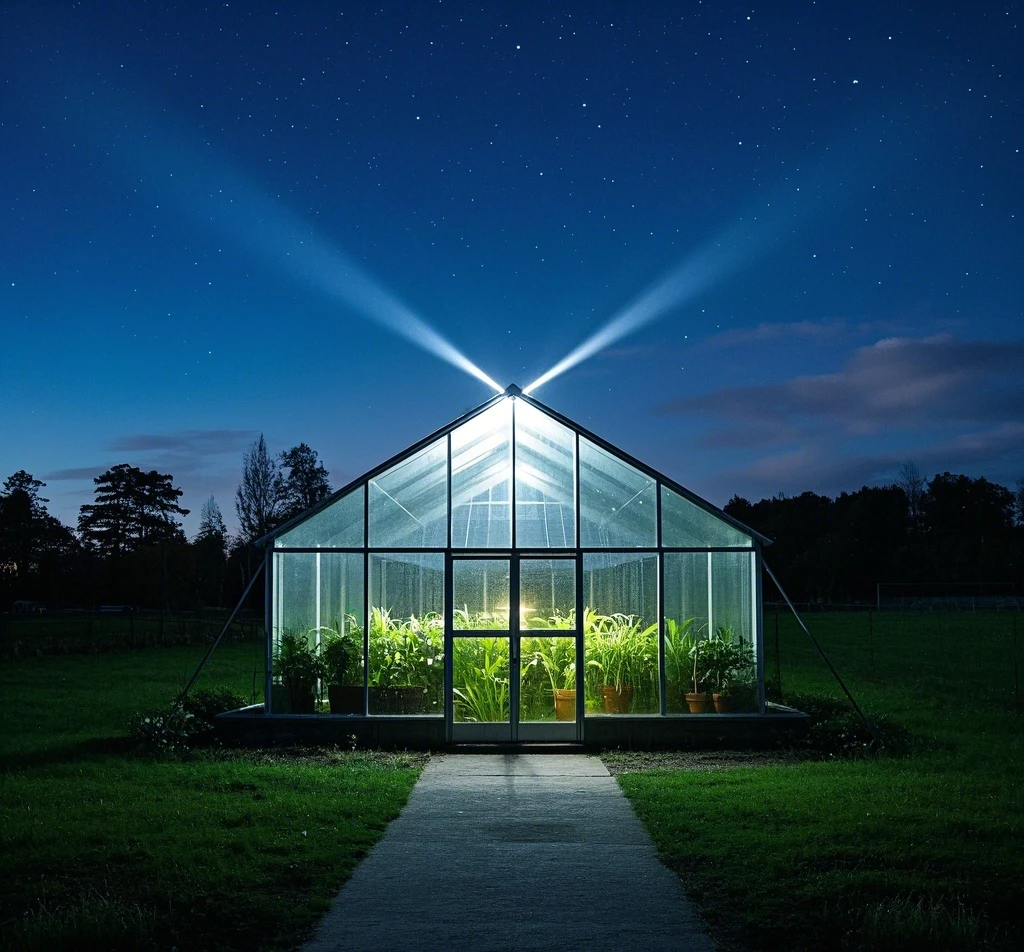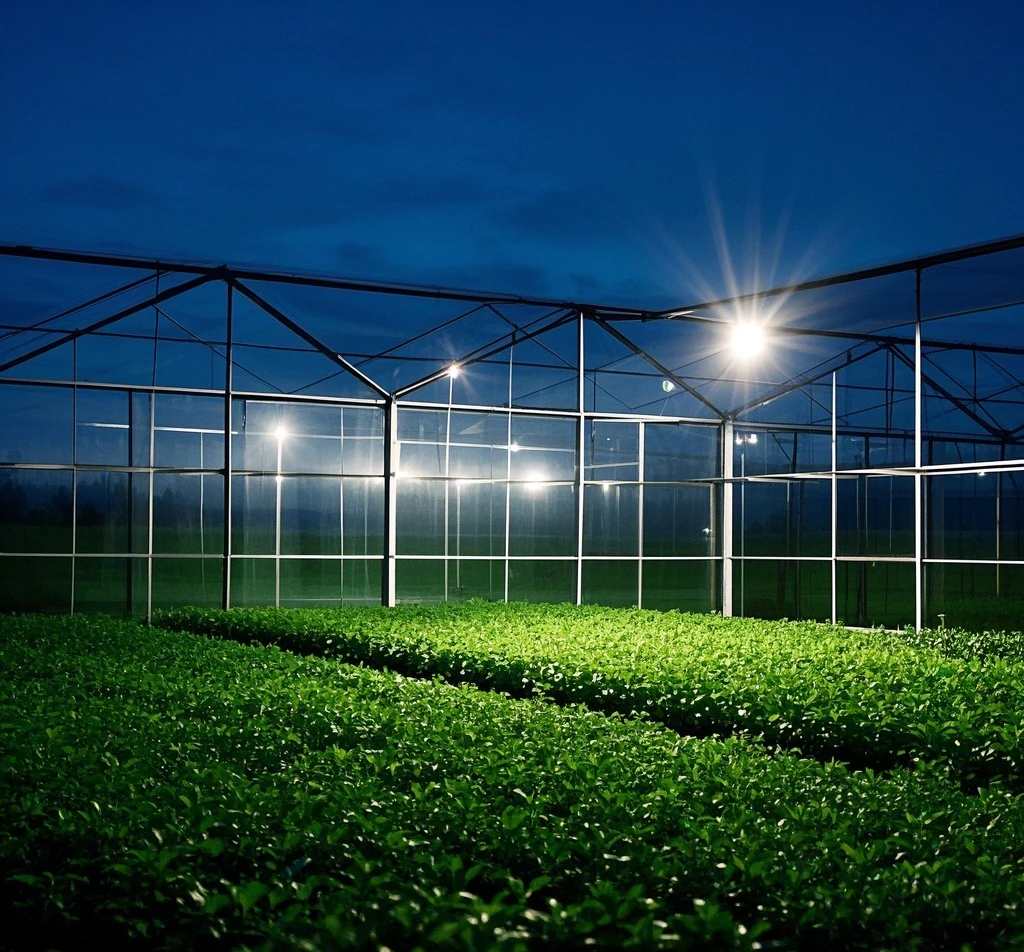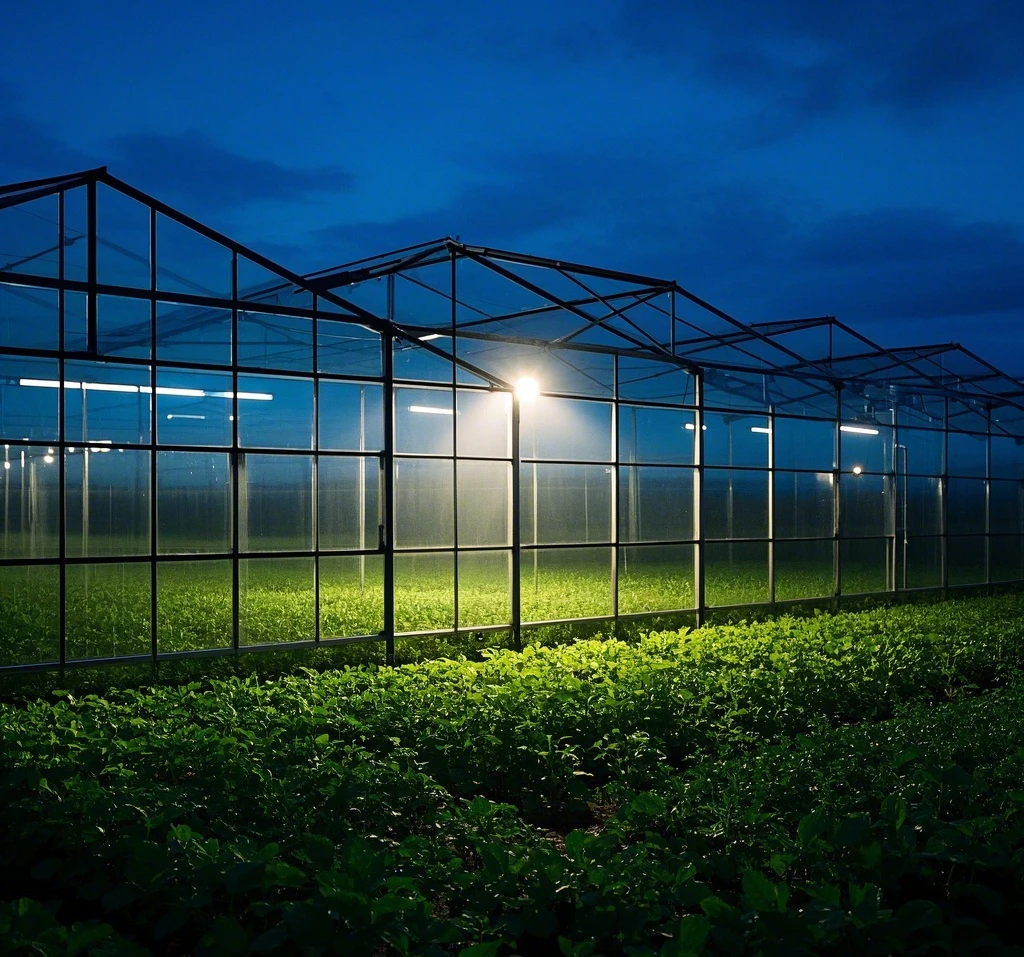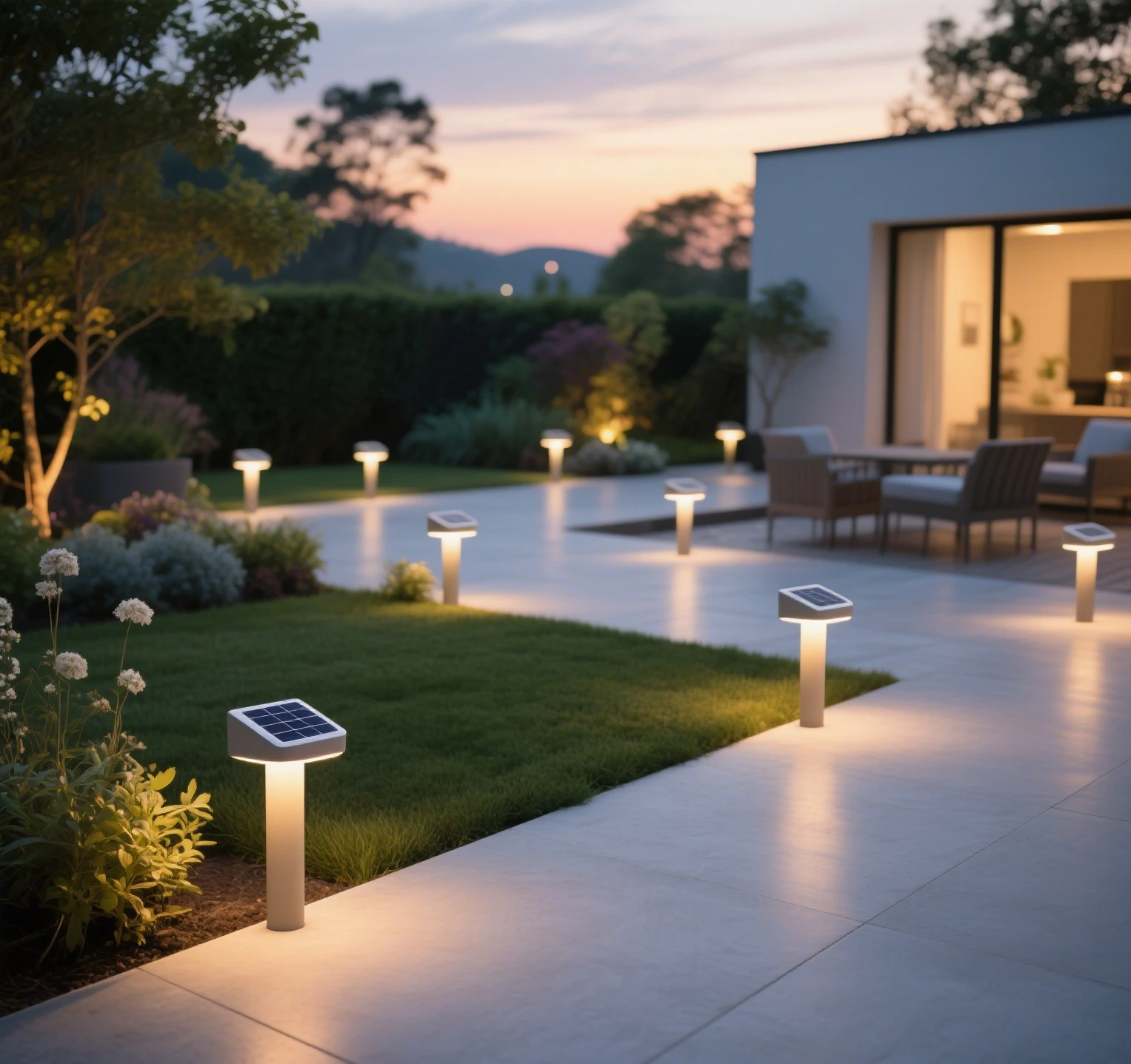Agriculture embraces innovation to meet rising demands. Greenhouses extend growing seasons, yet nighttime monitoring poses challenges. Solar spotlights emerge as a game-changer, illuminating these structures with renewable energy. Enhanced visibility improves crop oversight and security. This article examines the technology, its impact on greenhouse operations, and supporting evidence from U.S. authorities.

Technology Behind Solar Spotlights
Solar Energy Conversion
Solar spotlights operate on photovoltaic (PV) panels. These panels, typically monocrystalline silicon, absorb sunlight. Electrons move under the photovoltaic effect, generating electricity. Batteries store this power during daylight. After sunset, stored energy drives bright LED lights, lighting up greenhouse interiors or perimeters.
LED Efficiency
Light-emitting diodes (LEDs) define modern spotlights. High-lumen chips produce intense light from low wattage. Beam angles focus illumination precisely, targeting plants or pathways. Heat sinks prevent overheating, ensuring consistent output. Energy draw stays minimal, maximizing battery life.
Smart Integration
Intelligence elevates functionality. Motion sensors activate lights when activity occurs. Timers schedule illumination cycles, aligning with monitoring needs. Wireless connectivity links spotlights to farm management systems, enabling remote control. Automation reduces manual effort, optimizing efficiency.
Nighttime Monitoring Challenges in Greenhouses
Visibility Limits
Darkness obscures greenhouse conditions. Workers struggle to spot pests, disease, or equipment issues. Manual checks with flashlights prove slow and inconsistent. Security risks rise as intruders exploit blind spots. Poor oversight threatens crop health and yield.
Energy Constraints
Traditional lighting demands grid power. Greenhouses, often rural, face high electricity costs or unreliable supply. Constant illumination drains resources, cutting profits. Fossil fuel reliance clashes with sustainable farming goals. Energy burden hinders scalability.
Labor Demands
Night patrols stretch staff thin. Human monitoring misses subtle changes, like early blight or irrigation leaks. Fatigue reduces accuracy over long shifts. Dependence on personnel limits operational flexibility, especially for large facilities.
How Solar Spotlights Enhance Efficiency
Improved Crop Surveillance
Bright, steady light transforms oversight. Solar spotlights reveal plant details—leaf color, wilting, or insect damage. Workers identify problems faster. Cameras paired with lights capture clear footage, aiding remote analysis. Precision improves response time, protecting yields.
Strengthened Security
Perimeter lighting deters theft or vandalism. Motion-triggered beams spotlight intruders, alerting staff or triggering alarms. Coverage extends to storage areas, safeguarding tools and harvests. Enhanced protection reduces losses, bolstering financial stability.
Energy Independence
Solar power eliminates grid reliance. Daytime charging meets nighttime needs, zeroing out electricity bills. Battery reserves handle cloudy spells, ensuring uptime. Greenhouses cut energy use, aligning with eco-friendly practices favored by markets.

Evidence from U.S. Authorities
U.S. Department of Agriculture Report
The U.S. Department of Agriculture (USDA) explored solar lighting in its 2022 Smart Farming Technologies report. Greenhouses using solar spotlights improved monitoring efficiency by 40%. Nighttime visibility doubled detection rates for pest outbreaks. Energy costs dropped 25% annually, per data from 300 farms across 10 states.
National Renewable Energy Laboratory Analysis
The National Renewable Energy Laboratory (NREL) tested solar spotlight performance in 2023. Panels averaged 22% efficiency, powering LEDs for 10-12 hours nightly. Motion sensors cut energy use by 30% versus constant lighting. Battery longevity reached 5 years under greenhouse conditions, reducing replacement frequency.
Journal of Agricultural Engineering Study
A 2023 study in the Journal of Agricultural Engineering examined solar-powered greenhouses in California. Nighttime monitoring accuracy rose 35% with spotlights versus traditional methods. Light output averaged 700 lumens, sufficient for detailed inspection. Authors noted a 20% labor reduction, as automation handled routine checks.
Practical Benefits Beyond Monitoring
Crop Growth Support
Light supplements photosynthesis. Adjustable spotlights provide low-intensity illumination, aiding plants during short winter days. Controlled exposure boosts growth rates without extra power costs. Farmers gain flexibility in managing light-dependent crops.
Cost Savings
Initial investment ranges from $100-$300 per unit. Payback arrives within 18-24 months, based on U.S. average energy rates. Long-term savings accrue as maintenance stays low—LEDs last 50,000 hours, batteries 5-7 years. Profit margins widen, funding further upgrades.
Sustainability Edge
Carbon footprint shrinks. Each spotlight offsets 60 pounds of CO2 yearly, per NREL estimates. Greenhouses adopting solar align with USDA sustainability goals, earning consumer trust. Certification programs reward eco-friendly operations, opening premium markets.
Challenges and Solutions
Weather Variability
Cloudy regions limit solar input. Oversized panels or backup batteries address this, storing surplus energy. NREL data shows 90% reliability in overcast climates with proper sizing. Performance holds steady for most growing seasons.
Installation Complexity
Greenhouse layouts vary. Roof angles or plant rows complicate placement. Adjustable mounts and modular designs simplify setup. Manufacturers offer pre-configured kits, cutting labor time by 50%, per USDA findings.
Upfront Costs
Price tags deter small farms. Federal tax credits cover 26% of expenses through 2023. State grants in places like Oregon or Illinois add relief. Financing spreads costs, making adoption feasible for diverse operations.
Conclusion
Solar spotlights redefine greenhouse management. Enhanced monitoring efficiency stems from advanced PV cells, efficient LEDs, and smart controls. Visibility, security, and energy savings reshape nighttime operations. USDA, NREL, and academic studies confirm a 40% efficiency gain and significant cost reductions. Growth support and sustainability amplify their value. Challenges like weather or cost fade with tailored solutions. Solar spotlights position smart agriculture for success, illuminating a path to higher yields and greener practices.







Leave a Reply